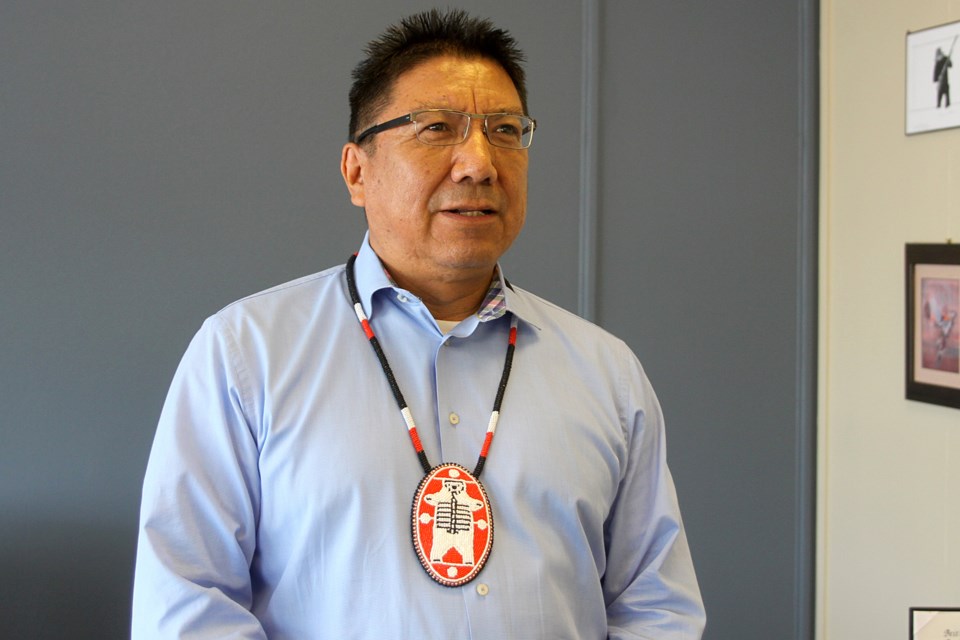CONSTANCE LAKE FIRST NATION – Day two of the 42nd annual Keewaywin Conference resulted in the re-election of Alvin Fiddler from Muskrat Dam First Nation as Grand Chief of Nishnawbe Aski Nation.
The deputy grand chiefs include Anna Betty Achneepineskum from Marten Falls First Nation, Mike Metatawabin from Fort Albany First Nation, and Bobby A. Narcisse from Aroland First Nation.
The new executive council will serve a three-year term.
In a heartfelt plea to the nominees, Apitipi Anicinapek Nation Chief June Black asked one question that summed up the generational plight of First Nation’s people.
“How are we going to help our people?”
Before her question, Black stood in front of the nominees to tell them she has sat at NAN conferences listening to leadership muddle through bureaucracy and red tape while her people were dying.
“I pleaded for help and I received none. I took the issues into my own hands and I did it myself. We still lost people, but I've managed to keep that at a minimum. Now, what I'm seeing is a lack of representation in the east. We need to be represented in the east. Our needs are no different,” Black said.
She also addressed the recent lawsuit by six First Nations that challenges the province’s Mining Act as an unconstitutional violation of their treaty and charter rights.
“Our future generation, our leaders who are going to come and sit here when we can't sit here anymore, we need to do more for them. We need to help them. We need to show them they're important and that this table cares. This organization cares. We need to do that.
“There's mining on our land. There's total destruction and all we want is money and never take care of the money. Our people are dying. Our animals are being contaminated. Our water is being contaminated. We need to do something.”
Black called on the candidates to unify the Nations against the corporate entities and government bureaucracies ready to reap the resources on their traditional territories.
“We need to stand up for our people. We need to stand up to these mining companies and we need to stop signing those documents that are destroying other First Nations. We need to come together to say this is what we're going to do together. This is how we're going to do it together.
"We need our leaders to stop playing with the politics of the bureaucracy and to start representing us and hearing us here,” Black said.
All of the candidates expressed their deepest condolence and acknowledged that more work needed to be done to solve the long-standing issues of intergenerational trauma.
“I acknowledge your leadership. I acknowledge your struggles and your restraints. I acknowledge the vision that you have for your community," said Fiddler.
“And that's a role as the Nishnawbe Aski Nation is to be there with you to stand shoulder to shoulder with you. Whether you are addressing the opioid crisis that is happening across the NAN territory or to be there with you when you mourn the loss of your loved ones, we acknowledge your losses.
“Or to be there with you when you stand up against Ontario to challenge them on their misguided position that they own our land and to challenge them with their policies on the Mining Act. So, I just want to acknowledge and thank you for this very important message that you just shared with us.”
Narcisse said Black’s message was felt around the table. The opioid crisis has taken its toll across all of NAN’s communities. He believes by harnessing the wealth of knowledge within the communities they can forge ahead with a commitment to healing.
"The champions in your communities are working very hard above and beyond . . . to look at ways to deal with the opioid crisis that is facing many of our children, youth and families," Narcisse said.
"I think it's very important to harness a lot of those champions: your elders, your youth, as well as to come together to tear down a lot of those silos that happen within our communities to maximize all the resources and wealth of knowledge that we have.
“It's also very important to look at some of the initiatives that are there - that are created at the First Nation level. It should not be a top-down approach where you're given a structured initiative to run it. It should be created at the community level.”
